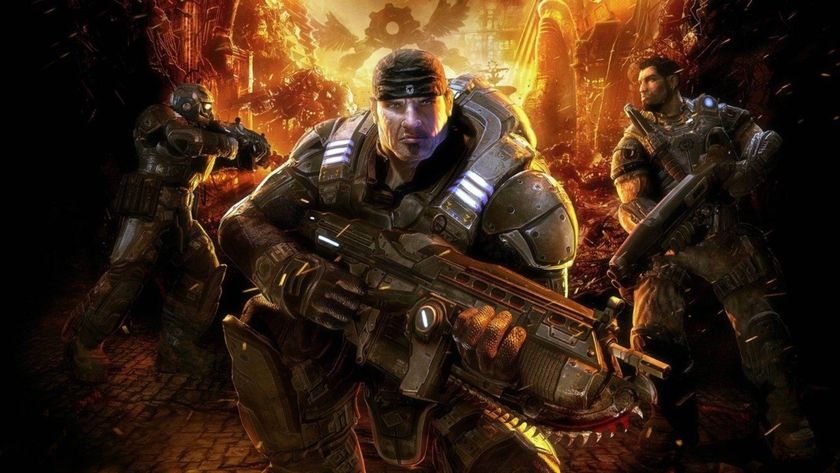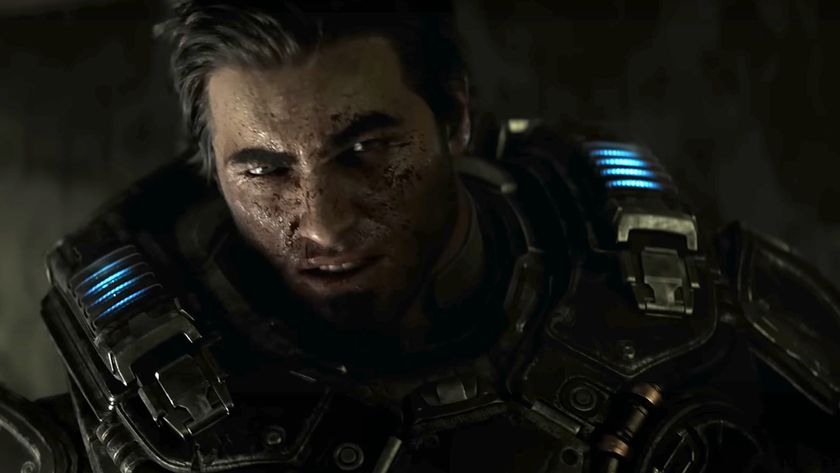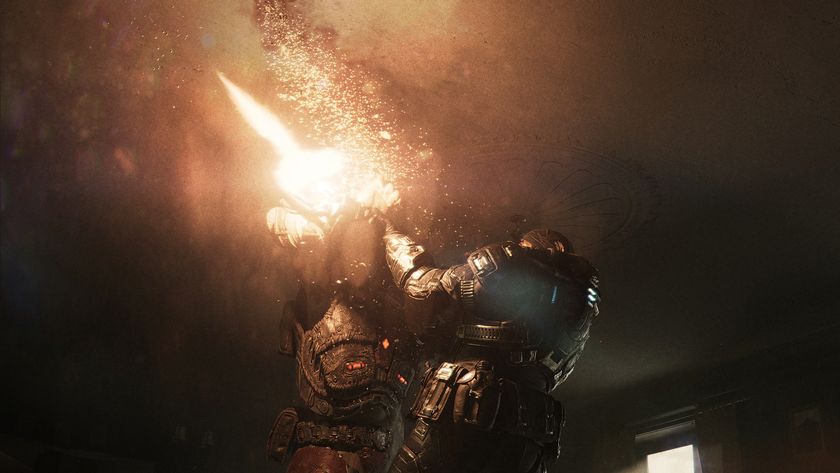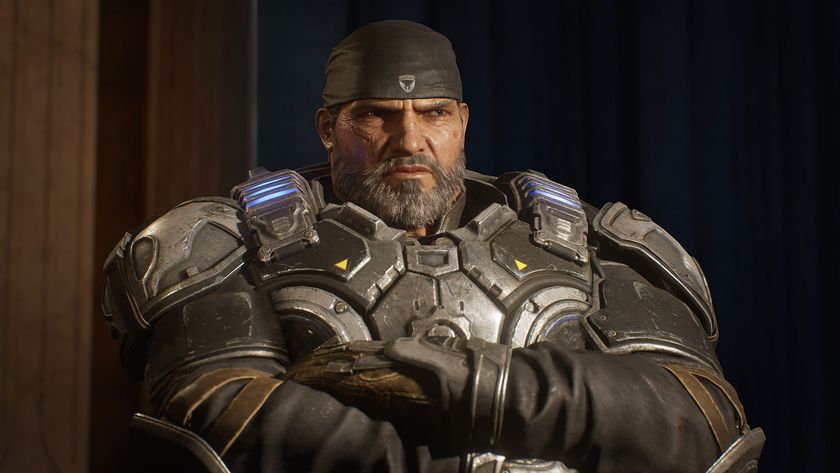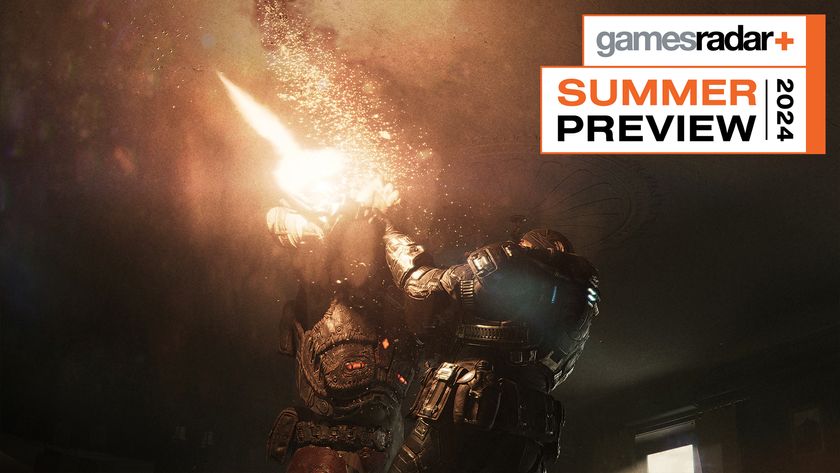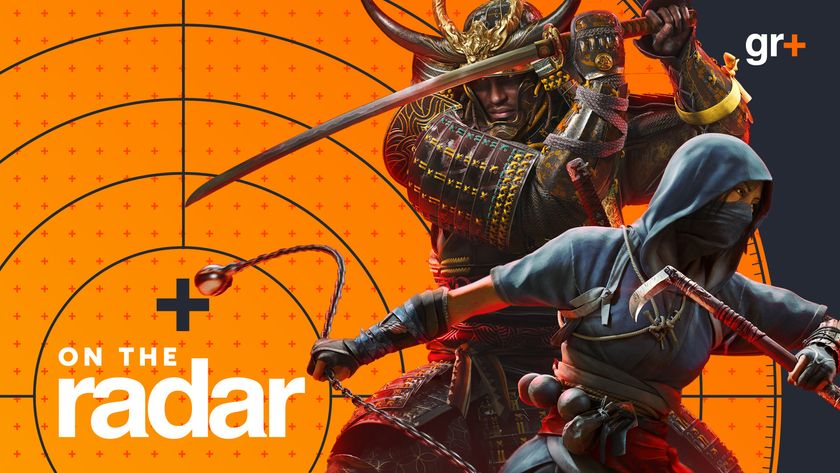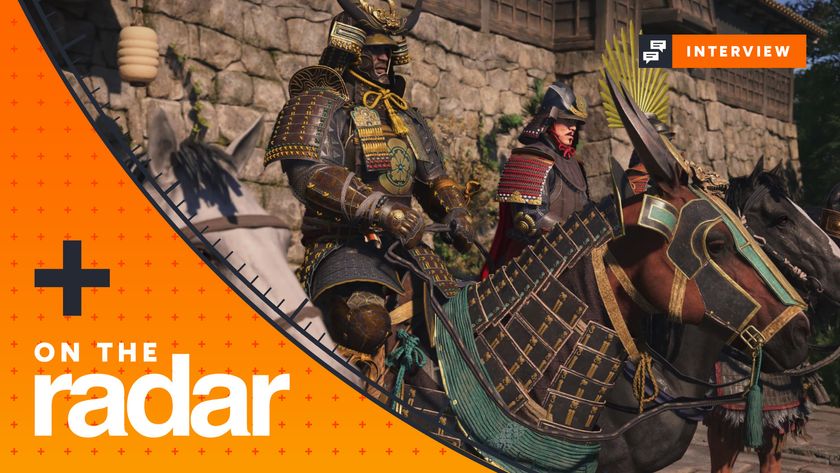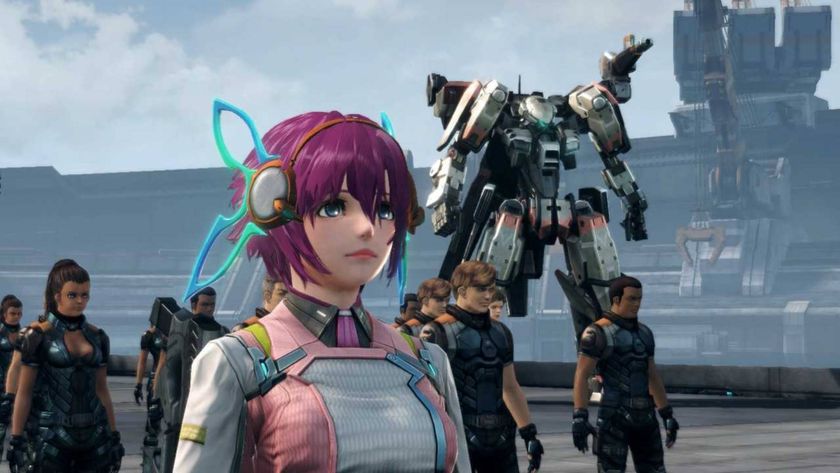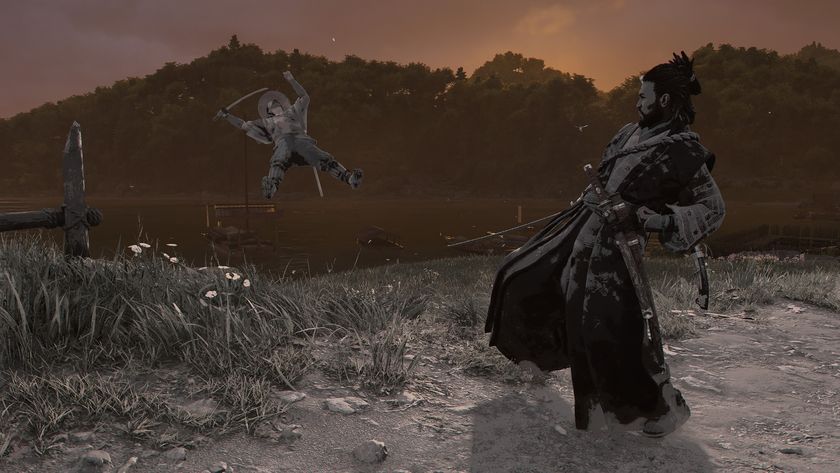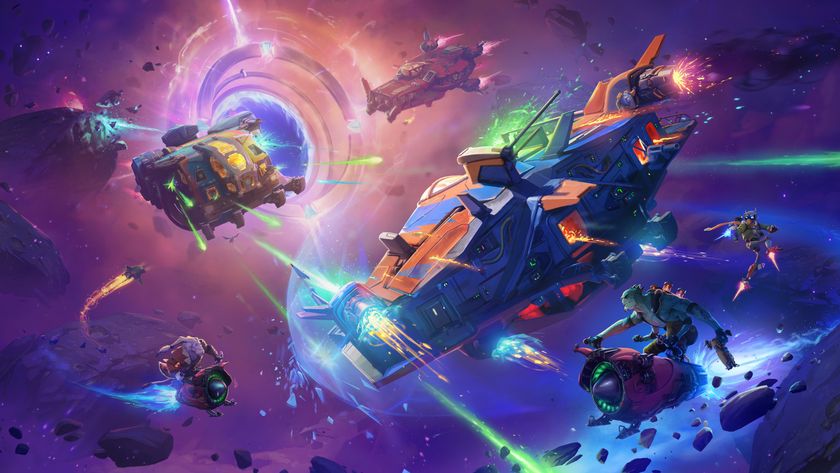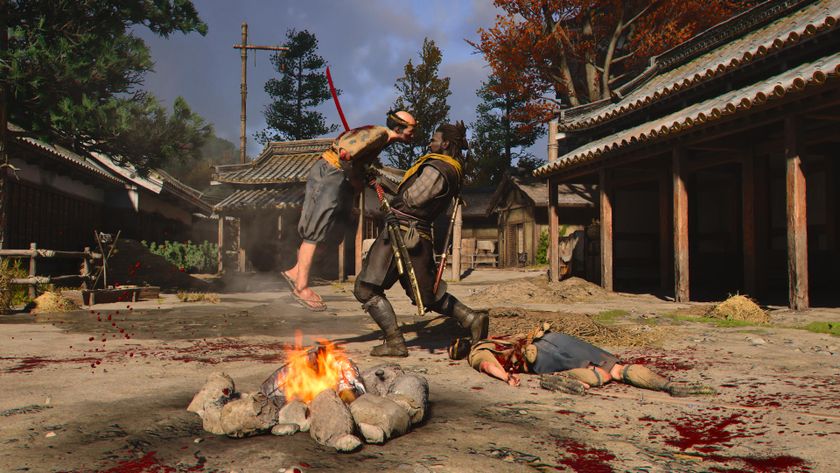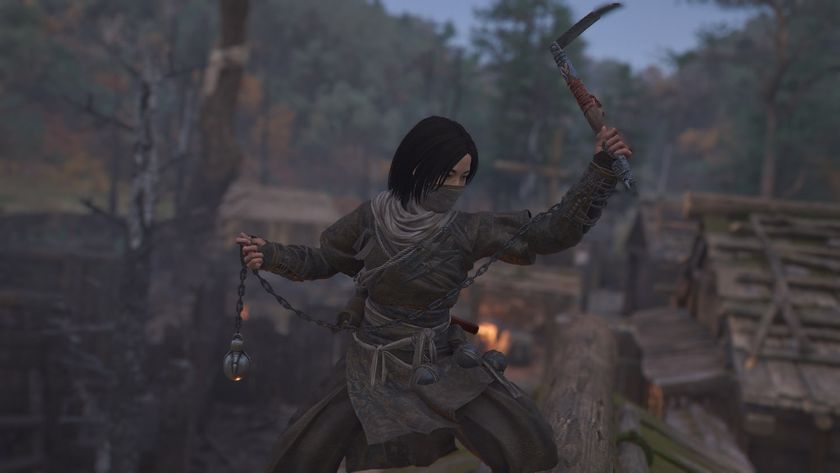"We knew that our default gun should be very distinctive": Remembering the Gears of War Lancer, a weapon as ludicrous as it was essential
An ode to the Lancer, the iconic Gears gun designed to be "devastating from both a strategic and physiological standpoint"
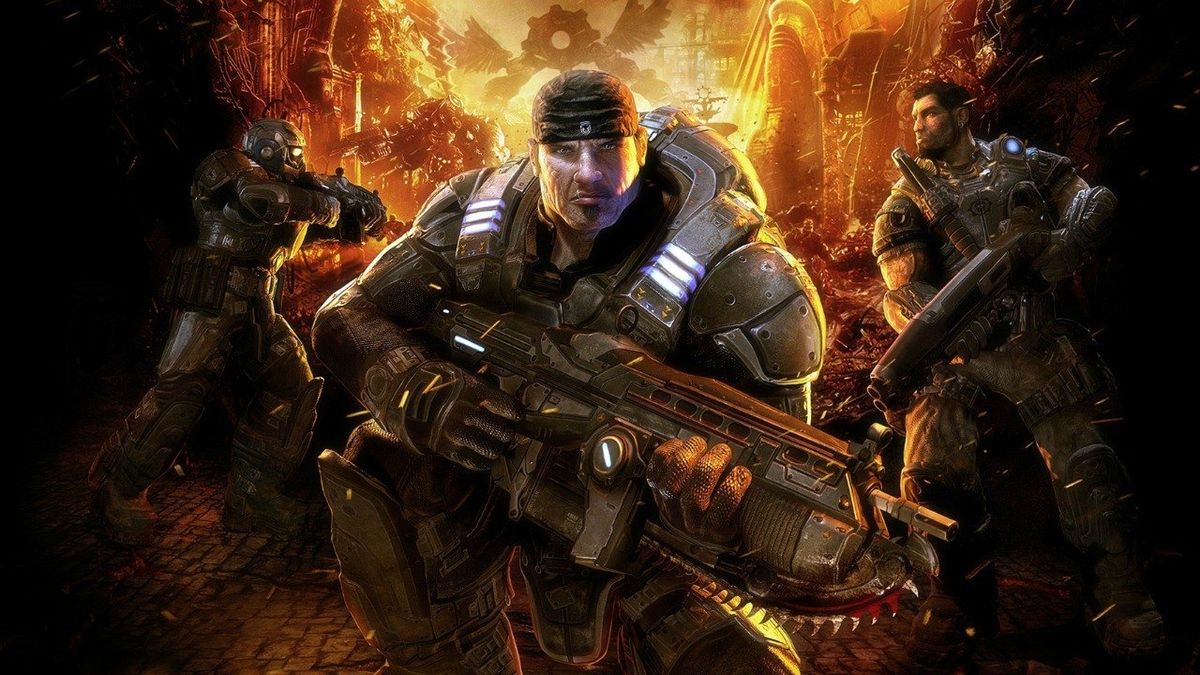
With Gears 5 on the near horizon, we dip into the Edge Magazine archives to celebrate Gears of War's Lancer – one of the greatest weapons in video games. This is all a part of our ongoing On The Radar: Gears 5 coverage, a deep dive into the upcoming game and a celebration of the long-running series.
To describe Epic's Gears of War series, we need merely invoke its flagship weapon: the Lancer. A mid-range assault rifle with a chainsaw for a bayonet, the Lancer both epitomises and fortifies the games’ style, tone and themes. It's violent, messy, grim, clunky and more than a little bit absurd. In a medium where guns are more common than plotlines, the Lancer does the seemingly impossible: it stands out.
"It was important to us to create a unique silhouette for the Lancer so that it would be easily identifiable and instantly associated with Gears' combat," explains Cliff Bleszinski, Epic's original design director. "Early on in Gears' development, we knew that our default gun should be very distinctive, multifunctional and, most importantly, fun to use. And, let's be honest, we're all big fans of The Evil Dead, Doom, and The Texas Chainsaw Massacre."
To understand the Lancer, though, we must first understand Gears of War. The series, ultimately, is about the inadequacy of its characters, the futility of their actions, and the endless frustration of having to cower behind walls when other heroes in the medium can walk out and meet the enemy on even ground. Marcus and Dom are bulging at the seams with testosterone, but they may as well be petit stick figures for all the good their brawn does them. Despite their size, they spend the majority of their time cowering behind overturned desks and vending machines. Progress is measured in inches as they creep forward from cover to cover, careful not to expose all that vulnerable man flesh to Locust bullets. Indeed, 'progress' might not be the right word. Nearly every mission of the series not spent chasing a red herring sees you failing to save a loved one or in retreat. Gears of War isn’t about winning. It is about losing as little as possible.
The right tool for the job

The Lancer brings together Gears of War's grim fictional universe and its oppressive cover mechanics and holds the two in a tight, self-strengthening symbiosis. Bleszinski notes that "in terms of the series' fiction, it was critical to develop a firearm that is effective in battling the Locust – one that is devastating from both a strategic and physiological standpoint".
Further, both the Lancer’s affordances and constraints reinforce the games' central cover-based gameplay. While devastating at close or middle range, the Lancer’s effectiveness drops off over a distance, and you as a player lack the ability to use its iron sights. Under fire from the Locust’s longer-ranged Hammerbursts, the Lancer-wielding player must patiently claw ahead to gain a position from which they can effectively return fire. Yet the Lancer’s ample clip size – although reduced over the series' course – and the usually prolific presence of ammo crates means you normally have few qualms about spraying bullets over a distance or blindly firing over a wall while pinned down. It grants the cover system the gritty desperation that it deserves.
And then, of course, there’s the chainsaw bayonet and its gruesome, iconic executions. Bleszinski explains how senior concept artist James Hawkins iterated many designs for the melee facet, which began as a circular buzzsaw before evolving into the chainsaw of today. "Once Jay unveiled the bayonet design, we knew we were on to something," Bleszinski recalls. "We completely fell in love with it once we began tearing through Locusts. The chainsawing experience became increasingly rewarding as we refined the Lancer’s feel and effect."
Sign up to the GamesRadar+ Newsletter
Weekly digests, tales from the communities you love, and more

"It was critical to develop a firearm that is effective in battling the Locust – one that is devastating from both a strategic and physiological standpoint"
Cliff Bleszinski
Since Halo, a button on the controller dedicated to melee attacks has been standard for console shooters, allowing for a quick hit if an enemy gets too close. Most of the weapons in Gears of War have a similar use, but the Lancer is subversive. This is not Master Chief’s swift pistol butt or 'Soap’ MacTavish's stealthy knife thrust. Performing a kill with the chainsaw bayonet is clunky, heavy, slow and graphic. Instead of a quick tap of B to hit an enemy away, the button must be held down and the chainsaw revved seconds before the attack is made. Then, while revving, the player must run up to the enemy to lacerate them. This is more difficult than it sounds: if an enemy shoots you, you’ll flinch and must begin revving all over again. A chainsaw attack is not something you do on the fly – it is something you do as a last resort. It is always deliberate, methodical, and personal.
"Intimate violence is a pillar of Gears’ gameplay," agrees Bleszinski. It is an intimacy that resonates throughout the series, between two equally unethical but equally justified armies. While you cower behind your wall and the Locust troops cower behind theirs, there is almost a strange sense of comradeship, of sympathy, of understanding. Both humans and Locust are fighting for a world they believe is their own, and neither human nor Locust wants to die. It is this intimacy that is epitomised by a chainsaw execution with the Lancer. Suddenly, your Locust foe isn't hiding somewhere over there. He is standing right beside you. This is the pivot on which the broader violence of the Gears of War universe spins.
It all boils down to this one chainsaw execution, where one human and one Locust connect in a messy, loud, almost erotic release of anger, flesh, and steel – an execution powered by hate and the ironic knowledge that the killing blade is burning one of the precious resources you are fighting a war over.
The feature originally ran in Edge Magazine #282. You can read more from Edge here, or get the magazine every month by taking advantage of our subscription offers for print and digital editions.
Edge magazine was launched in 1993 with a mission to dig deep into the inner workings of the international videogame industry, quickly building a reputation for next-level analysis, features, interviews and reviews that holds fast nearly 30 years on.
